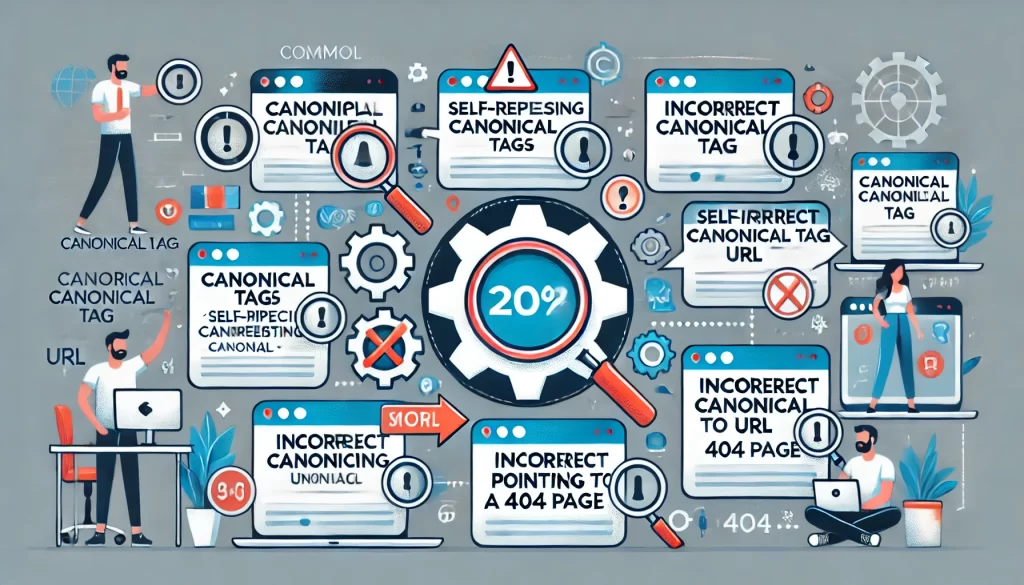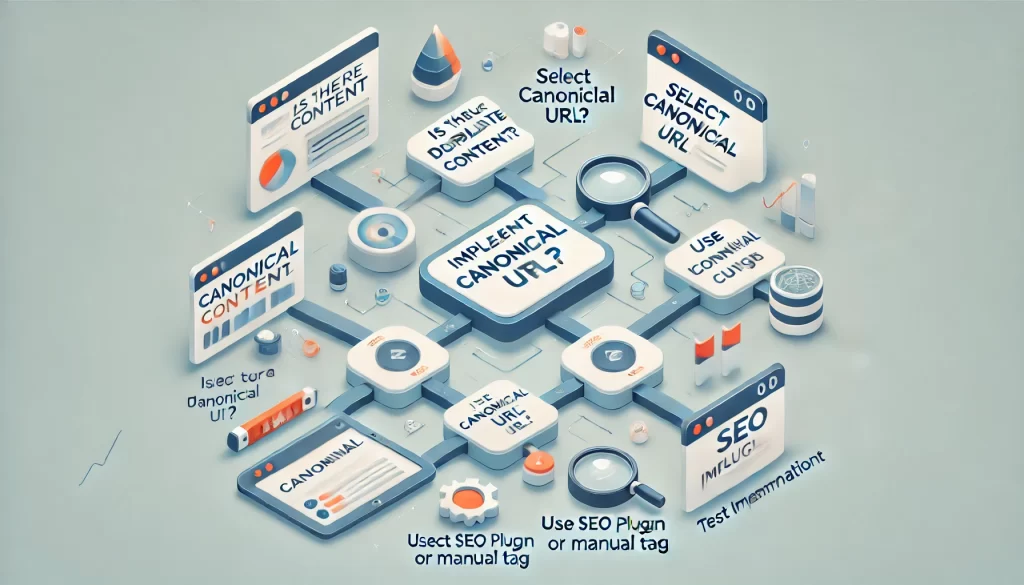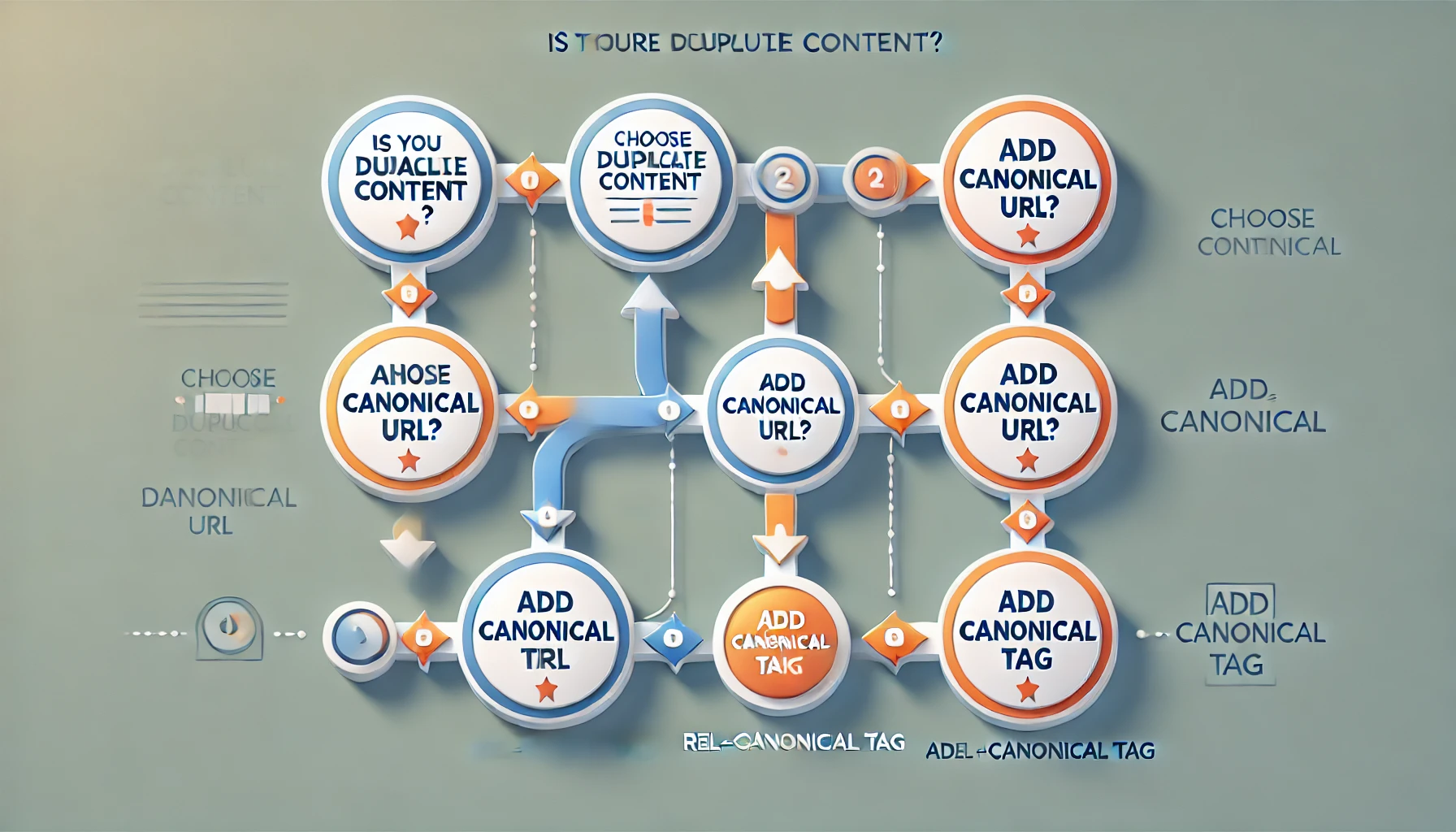Introduction
In the world of SEO, one common issue that websites face is dealing with duplicate content. Search engines like Google need to identify which version of content to rank, especially when the same content appears on multiple URLs. This is where Canonical URLs come into play.
A Canonical URL is a tool used to tell search engines which version of a page is the “main” one, helping avoid penalties and confusion. In this guide, we’ll dive deep into what a Canonical URL is, why it’s crucial for your SEO strategy, and how to implement it effectively.

What is a Canonical URL?
Defining a Canonical URL
A Canonical URL is a specific URL that you designate as the “master” version of a set of duplicate pages. It helps search engines understand which page should be prioritized in search results. The <link rel=”canonical”> tag is placed in the head section of a web page’s HTML code to signal this.
The Role of a Canonical URL
In simpler terms, a Canonical URL tells search engines which page to consider the original one when multiple pages have similar or identical content. This reduces the risk of duplicate content penalties and ensures that all link equity is directed to the right page.
Why Are Canonical URLs Important for SEO?
Preventing Duplicate Content Penalties
Search engines like Google may penalize websites for having multiple pages with the same content. If the content appears across different URLs, it can confuse search engines about which page to rank. Canonical URLs solve this by consolidating ranking signals into one URL, preventing any content duplication issues.
Suggested Post:
Impact on SEO Rankings
Duplicate content can split the page authority between different versions of the same page, negatively impacting SEO. By using Canonical URLs, you consolidate that link equity and improve your chances of ranking higher in search engine results.

How Canonical URLs Help with SEO
Improved Search Rankings
A properly implemented Canonical URL ensures that all the link equity (backlinks and other ranking signals) is directed to the primary page, boosting its search engine ranking. This helps your site avoid the ranking dilution that occurs when content is scattered across multiple URLs.
Better Indexing by Search Engines
When a search engine encounters duplicate content, it has to decide which page to index. With Canonical URLs, you’re essentially telling search engines which page to focus on, making the indexing process faster and more efficient.
Avoiding Content Ownership Confusion
Multiple URLs with the same content can cause issues with content ownership. Search engines may be unclear about which page is authoritative. A Canonical URL eliminates this ambiguity by pointing to the preferred version of the content, ensuring clear content ownership.
How to Implement a Canonical URL
Step-by-Step Guide
- Identify Duplicate Content: Find pages with similar or identical content on your website.
- Insert the Canonical Tag: In the HTML <head> section of the duplicate pages, add the <link rel=”canonical”> tag pointing to the preferred page.
- Test the Implementation: Use tools like Google Search Console to ensure that the canonical tags are correctly set up and recognized by Google.
Example of a Good Use Case
- Good: A product page that has variations (e.g., size or color) should use a canonical tag to point to the main product page. This way, search engines understand that all variations belong to one product.
Example of a Bad Use Case
- Bad: If the canonical tag points to the wrong page, or to a page with less authority, this could confuse search engines and affect rankings negatively.
Tools and Plugins to Help with Implementation
- Yoast SEO
- Rank Math SEO (provides automatic canonical URL suggestions)
- Screaming Frog SEO Spider (for auditing canonical URLs on your site)
Common Mistakes When Using Canonical URLs
Incorrect URL Pointing
One of the most common mistakes is incorrectly setting the canonical URL to the wrong page. This can direct the link equity to the wrong page and harm your SEO efforts.
Failing to Use Canonical Tags for Important Pages
Not using canonical tags on important pages (like product pages or blog posts with similar content) can result in search engines treating them as duplicates, reducing their ability to rank.
Best Practices for Canonical URLs
- Consistency with HTTP vs. HTTPS: Make sure your canonical URLs consistently use either http or https, avoiding any mixed content issues.
- Use Absolute URLs: Always use full URLs, not relative ones, to prevent potential errors in linking.
- Regular Audits: Conduct regular audits of your canonical tags to ensure they’re correctly implemented and that there are no mistakes or outdated links.
Key Takeaways:
In conclusion, Canonical URLs are a fundamental part of an effective SEO strategy. By consolidating link equity, preventing duplicate content penalties, and ensuring better indexing, they can help your website achieve higher rankings. Make sure to implement canonical URLs correctly for long-term SEO success.
Canonical URLs are an essential tool in SEO to manage duplicate content and ensure search engines understand the primary version of your content. Implement them correctly to boost your SEO rankings and improve the indexing process.
- Canonical URLs help resolve duplicate content issues by pointing search engines to the preferred version of a page.
- They prevent ranking dilution by consolidating link equity to a single page.
- Proper implementation of canonical tags ensures better indexing and prevents content ownership confusion.
FAQs
What is the difference between a Canonical URL and a Redirect?
A Canonical URL is used to tell search engines which version of a page is the “main” version, while a redirect automatically sends visitors from one page to another. A canonical URL does not change the user experience, but a redirect does.
Can I use Canonical URLs for non-duplicate content?
Yes, although Canonical URLs are typically used for managing duplicate content, they can also be used in cases where you want to indicate that a page should be treated as the authoritative version, even if there is no duplicate content.
Should I use canonical URLs for paginated content?
Yes, using canonical tags for paginated content helps search engines understand the relationship between a series of pages (e.g., page 1, page 2, etc.) and avoid penalizing them for duplicate content.
